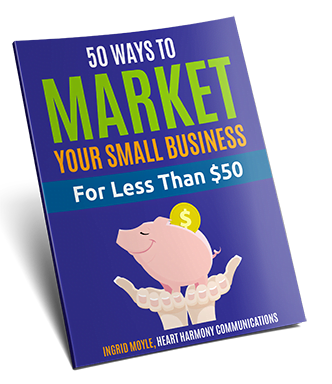Are you great at what you do, but struggle putting that awesomeness into words for your website, blog or social media? Here are some writing tips to help you get those elusive words out of your head and onto paper.
Are you great (or even a little bit amazing) at what you do but when you try and put that into words for your website, your blog or your social media, you feel like the words skitter away from your brain faster than a cockroach when you turn the light on the kitchen at night?
Even if you do manage to catch a few random words in your brain, when it comes to putting them down on paper do you feel like you are typing with ski gloves on? You have to retype things a thousand times, and yet the words still look odd and slightly sullen at being disturbed from the safe confines of your brain.
Writing about yourself is particularly hard, and raises a whole stack of dangerous emotional undertows.
If you are a creative, then you could face other issues when trying to write about your business.
You may have brilliant ideas that you want to put into writing, but your words end up as word puree. There are fabulous ingredients in there, but when you zap them for 10 seconds in an anxious brain blender on high speed, everything sort of mushes together.
Unfortunately, some people forget to put the lid on their blender, so their ideas scatter and fragment across multiple pages. This type of brain explosion is about as engaging and useful for your potential clients as playing “Where’s Wally” with a two-year-old who needs a nap.
Here’s how to stop the word puree and brain skitters when writing about your business.
Start By Working Out Who You Are Writing To
How well do you know your ideal client? Not just some broad stuff on the type of industry you serve (e.g. we are residential plumbers serving the XYZ part of town), but the deeper stuff.
What is bugging them? What sort of emotional state are they in when they are looking for a service like yours? What have they tried before? What are they worried about?
Start your writing by plonking your ideal client metaphorically across the desk from you as you write.
Imagine what they are wearing, how they are sitting in the chair, and what they say when they sit down.
The clearer you can visualise your ideal client, the clearer your communication will become.
Imagine you are having a conversation with them – saying the words you are thinking of saying out loud to them. Check if the words you are writing makes sense and if you can see a glimmer of interest, confusion or flat out boredom with what you are saying.

How Do You Want People To Feel After Reading Your Words?
If you have been able to get inside your client’s mind, you will have an idea of how they feel when they land in front of you.
Are they confused, fearful, angry, hopeful or something else?
Take the next step. How would you like them to feel after reading your words or speaking with you?
Do you want your clients to feel confident in you? Clear on the next steps? Calm? More jittery or afraid so that they have to take action (I am personally not a fan of this strategy as it smacks of manipulation).
Knowing the emotional state that you are aiming for helps you with the words you choose and how you structure them on the page.
Know the Action You Want People to Take
Next, work out the action you want your ideal client to take after they have read your words. Words are nice and all, but if people don’t take action after hearing them, then they are a waste of pixels and air-time.
Start with your goal in mind. Do you want your readers to call you to book a free coaching session OR to make an appointment for you to fix their lights? Do you want them to join your mailing list OR connect with you on Facebook?
But what if you want to give them a choice on a range of things that they can do?
You may think you are being generous, but psychology studies show that the more choices you offer someone, the less likely it is that they will take any.
So, narrow it right down. What is the most important action that you want people to take after reading a particular piece of writing?
The clearer and more focused you are on the actions you want people to take, the clearer and more focused your communication will be.
One piece of writing = one action.
Do Your Research and Gather Inspiration But Don’t Steal
Now it is time to hit the books.
There are two types of people – some who never research and start to write off the top of their head, and those that research and use it to inform their writing.
The never-research people’s writing often comes through as shallow, self-focused and incomplete. They miss critical information that a client needs to make a decision, which means it isn’t very effective.
I am firmly in the research camp.
For me, when writing about a business, I have a solid research phase where I scan over what your competition is doing by checking out their websites or marketing material.
Get some solid examples of what has worked for other people in similar situations through checking out the first two pages of Google search results, and figure out what they are doing that is making them successful.
Look at page structures, words used, offers made and then put your notes away and don’t look at them again until the first draft is done.
Why?
Have you ever watched a movie and noticed that the actor drops in and out of their accent? They can’t seem to keep a consistent accent going. After a while, you ignore what they are saying because you are so focused on watching and waiting for the next accent break.
That’s what it is like when you start to write with other people’s words in front of you. You deliberately or accidentally pick up their words and accents and use them in your writing.
You want to tap into the collective consciousness of the industry and your competitors, but not merely parrot things back.
Work Out Your Writing Recipe
Now you have the ingredients you need for your writing, but you need to work out the recipe first.
Plan out a logical structure for your communication, with each section and paragraph gently leading the reader along the path to your desired outcome.
Depending on your personal style, this planning could be a simple list of scribbled dot points or a fully worked through plan with points you want to include in each paragraph. Find what works for you.
So, for example: Your recipe may be two paragraphs introducing your business; a series of dot points about what you do differently than your competitors; three testimonials to build credibility; one call to action.
By working out the recipe you are working towards before you start to write, there is no doubling up of ingredients and everything flows smoothly.
Get Writing
At some point, you must sit down and simply write. Just like the archetypal bear hunt, you can’t go over it; you can’t go around it; you just have to go through it.
You have done your research to gain ideas for your writing, but remember not to copy and paste other people’s words as your own. It is obvious when you are speaking someone else’s words.
Remember to liberate the essence of their words and not plagiarise their words. The world needs to hear your unique voice and style of delivery, and not hear you doing a lousy ventriloquist impersonation of someone else’s words.
The unique way you word things carries an energy print that helps to attract the right people to your business. Be uniquely you – with all the energy and passion that you can muster.
Here’s what most writers won’t tell you. Start with a really messy, stream of consciousness draft. Don’t try to edit yourself at this point as editing and creating run on two different brain circuits. If you leap into editing while you write, you free your inner critic to strangle the creative bits of your brain into oblivion.
Remember that first drafts are designed to be messy, terrifyingly bad and incomplete. Get over your fear of imperfection and make a beautiful mess with your words.
Just get your words down on paper, and then sleep on your drafts (figuratively not literally unless you have a thing for the smell of ink), to gain psychological distance from your words. This helps slow the brain down and helps you to spot glaring errors and mushy bits.
Also remember, that you may have writer’s block, but most people don’t have speakers block. If your brain turns to cotton wool when you try to type your words, go back to your imaginary client and tell them what you want to say while recording yourself saying it. Then transcribe the words back and you suddenly have a first draft!
Check out our bulletproof copywriting formula if you are struggling with how to write the first draft.

Edit and Polish
Most people throw their words at the paper and do a cursory glance over them before hitting send/publish.
This isn’t enough. You need to do some serious presentation work to turn a basic word dish into something spectacular.
Editing is where you turn your stream of consciousness into something useful, interesting and readable. It is where you round out thoughts, fix grammar and spelling mistakes and fill in all the missing bits.
Go hard with your editing and don’t be afraid to prune out bits you emotionally like but that don’t add anything to your writing (also known as killing your darlings)!
Copywriters (cough … like us) do multiple edits of every document. We agonise over word choices the same way that a wine connoisseur agonises over wine pairings.
We are also known to throw out our first drafts in full when we realise how bad our beautiful mess is, and start again from scratch – which is all part of the reason that copywriting rates are what they are.
Cut The Fluff and Padding
When you read your words back, have you said the same thing only in different ways? In business communication, once is generally enough. Get rid of the padding as you are not trying to scrape in to meet the minimum word count on an assignment.
Delete Jargon and Acronyms
Each industry is known for its jargon and those little letters that represent words. Psychologically it is a way of showing belonging and keeping out strangers. Do you really want to shore up your ramparts and repel invading armies through your words? If not, then do a jargon-busting scan through your business documents before hitting the print or send button.
Keep It Simple
Using complex language in documents is tiring to read and creates brain fog, which means you are losing readers and understanding. Remember, a confused mind always says no.
No one is impressed if you pack your sentences with complex language. They just think you are a bit of a wally who doesn’t know how to communicate with other humans, and that you need to get a grip.
However, informal doesn’t mean unprofessional, so leave out all the gossip and off-colour jokes.
A quick tip – unless you use those words in conversation with your mum over dinner, then you need to tone down your pomposity.
Get Active
Make sure your words are active, and not written in a passive couch potato style. “The selection panel reviews all applications” is better than “Once received, applications for positions are reviewed by the selection panel”.
Get Up Close and Personal
Put the “you” back into your writing rather than third-person impersonal language. It’s more interesting to read, and people will respond better to your writing. “We value your feedback” is more effective than “XYZ Corporation values your feedback”.
Watch The Meaning Of Words
If you can’t define out loud to someone what a word means – don’t use it. If in doubt, use a dictionary to double-check a word’s meaning (and spelling).
My personal favourite was when someone sent me an email apologising for the incontinence they had caused me. I hope they were trying to say inconvenience.
Use Paragraphs
When I was lecturing at uni, one of my students hit an all-time record: One paragraph that went on and on and on for a page and a half. 75% of the students seem to have missed every lecture on paragraphs during school.
Just in case you need a refresher as well, a paragraph is 3-4 related sentences on a single topic or thought. It contains one main idea or theme, accompanied by supporting ideas or examples.
If you change the topic, then change paragraphs to help your reader understand that one set of ideas has ended and another set is starting.
Paragraphs help readability and give people space to digest what has been said.
Paragraphs are not an endangered species, so feel free to use them.
Read It Out Loud
Read your words out loud. If you run out of breath before you run out of sentence, your sentence is too long, and you need to take the pruning shears to it.
Spell and Grammar Check EVERYTHING
Never hit send or publish on anything without running it through a spellchecker or grammar checker. I use and love Grammarly and recommend it to all my students and clients.
However, you can’t entirely rely on technology to pick up all the quirky bits, so print off your document and read it back to help your brain pick up errors with your writing.
Check the Result and Adjust
Writing is a skill in the same way that cooking, playing the piano or kicking a football are skills. The more you do it, the better you get.
In life, you get feedback on anything you write. People either take action, or they don’t.
If you don’t achieve the results you set out to accomplish in the first step, you need to identify the feedback, work out what to do differently and then adjust your approach.
You may have skimped on the finishing phase, or skated over some feedback that this approach is not the best one for you right now.
You may also need a second set of eyes to look over your words to help you spot where you may have gone off course or miscommunicated your intent.
On a plus, there are no failures in life. It is all simply feedback. The question is, what will you do to improve your written communication?
Need help with writing a specific page on your website? Here’s some information about what to put on your home page; your About Us page and your Contact Us page.





